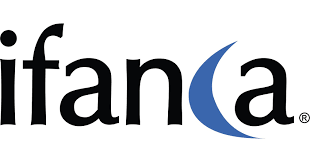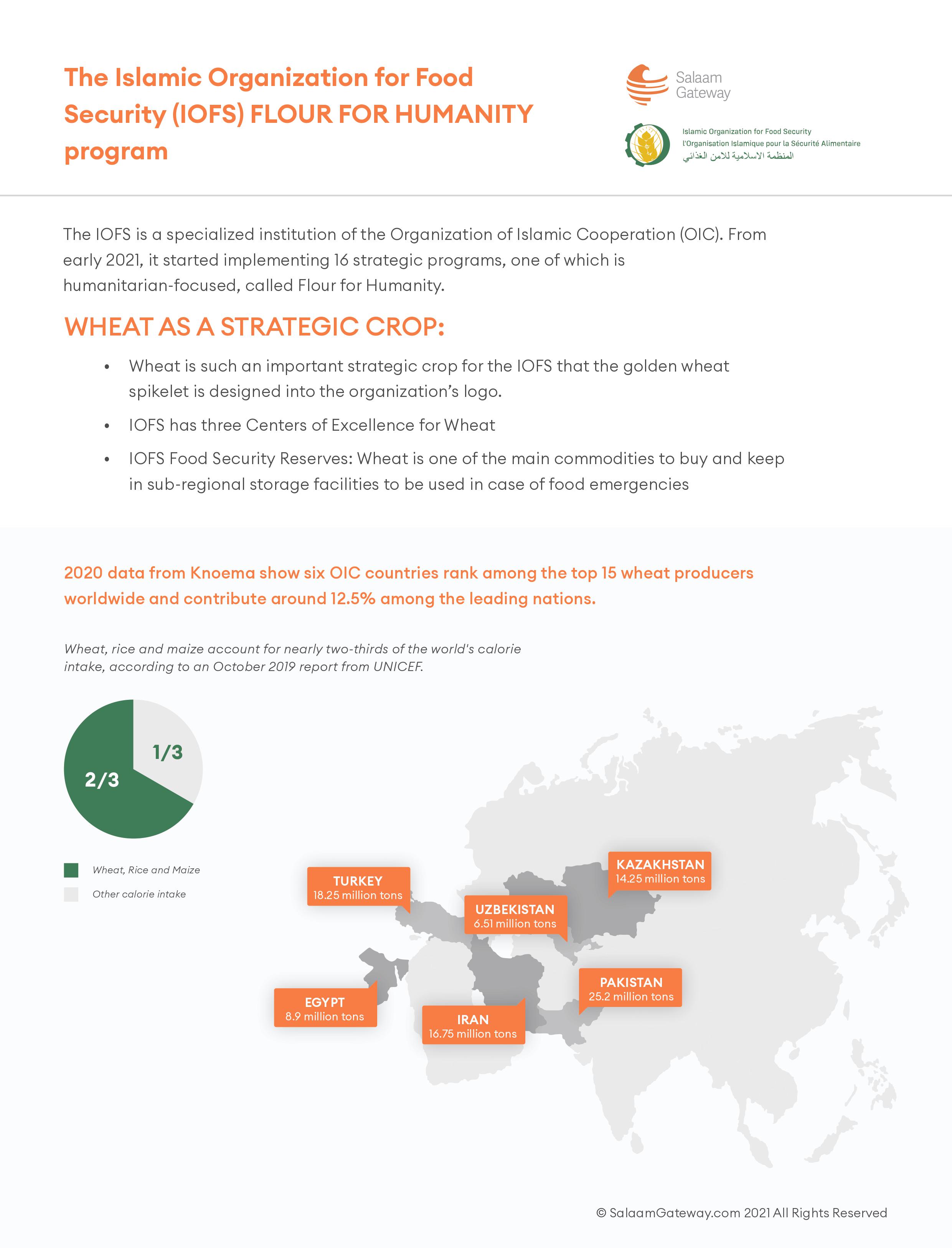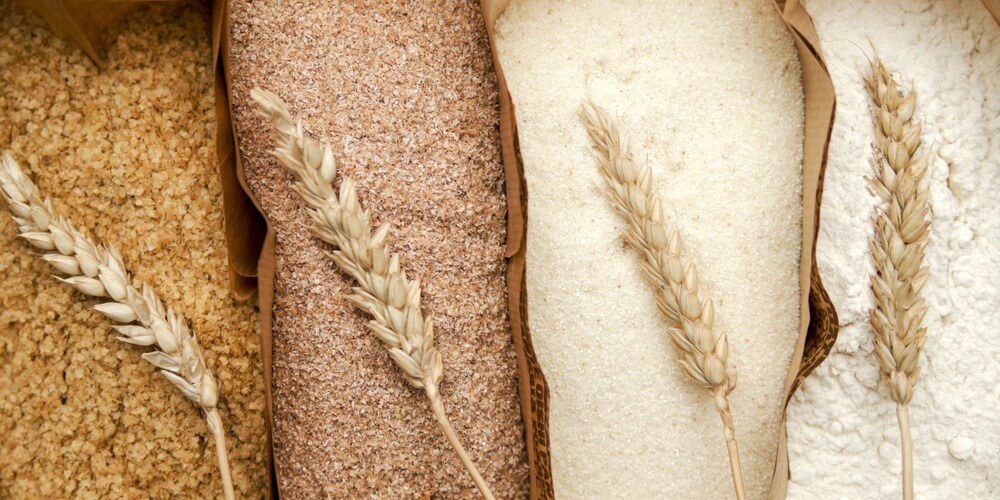
Islamic Organization for Food Security starts Flour for Humanity program
This article is part of a series sponsored by the Islamic Organization for Food Security (IOFS).
Dull eyes set deep in their sockets, skeletal children’s bodies, bloated bellies and protruding ribs. Over 50 years ago, the harrowing images of starving Biafra children became a global symbol of famine and malnutrition. The Biafra - Nigerian Civil War of 1967-70 led to the first televised hunger crisis and the food distribution programs that were introduced to help those children reshaped humanitarian emergency aid as we know it.
Today, one in every nine people in the world is hungry, according to the 2020 Global Nutrition Report, with new crises, floods and droughts resulting in an 11% increase in people facing food insecurity since 2016, according to UNICEF’s The State of the World’s Children 2019 report.
Reflecting on these grim statistics, Yerlan Baidaulet, the Director General of the Islamic Organization for Food Security (IOFS), said hunger and malnutrition require attention from all of us.
“Despite all obstacles, we need to work together,” said the head of the specialized institution of the Organization of Islamic Cooperation (OIC).
Headquartered in Kazakhstan, the IOFS works in close partnership with its 36 member countries and generally with all 56 OIC member states to enhance food production and make food more available, accessible and affordable. From early this year, they started implementing 16 strategic programs, two of which address humanitarian needs.
Humanitarian aid is a necessary part of the food security equation to feed the hungry and achieve the complete eradication of hunger. In September 2020 during the 75th session of the U.N. General Assembly, Kazakhstan’s president Kassym-Zhomart Tokayev acknowledged its importance when he said: “The Islamic Organization for Food Security is willing to provide comprehensive support for the development of food reserves and implementation of a large-scale international humanitarian campaign.”
FLOUR FOR HUMANITY
OIC member countries are some of the biggest donors of humanitarian assistance in the world. Last year, Turkey was second only to the United States, contributing $8.04 billion, which largely includes its expenditure on hosting Syrian refugees. Other key OIC donors include Saudi Arabia ($679 million) and the UAE ($383 million).
At the same time, OIC nations are the largest recipients of international humanitarian assistance. Syria, Yemen, and Lebanon are the top three, and they alone benefited from $6.3 billion of aid last year. Other OIC countries requiring aid include Afghanistan, with its 15 million people targeted for assistance (assessed before the Taliban takeover in mid-August), and its neighbor Tajikistan, that requires support to manage complex and multifaceted border management challenges.
Aid could be perceived as a negative but it forms a big part of the world’s development cooperation effort, according to the OECD. For some countries in crisis, for example, aid is a bridge to the first steps of development. For global Islamic organizations such as the OIC and IOFS, giving humanitarian assistance stems from the values of solidarity and mutual assistance among the Muslim ummah.
In this context, countries such as Kazakhstan give in humanitarian aid what it can. For Flour for Humanity, one of the IOFS’s two humanitarian programs, the Central Asian nation leverages one of its agro-economic strengths — wheat production.
Kazakhstan has an oil and gas-driven economy but its agriculture sector has a huge potential. The country is a major exporter of wheat flour, estimated at 2.5 million tons in 2020-21, according to a trade publication.
Kazakhs have a deep connection with their flour, the key ingredient that goes into bread, which, as a local proverb goes, is the “head of all foods”. The respected poet Shomishbay Sariev, who died earlier this year, probably summed up best what bread means to Kazakhs:
In all the times we have need of bread,
And to you, future generations,
this is the wisdom we bring – we give you bread.
It is often the case that a guest cannot leave a Kazakh home without at least tasting the bread from its feast table. Hospitality is an integral part of the nation’s culture and so it is incumbent on Kazakhs to share what they hold dear.
In April, Kazakhstan agreed to allocate 10,000 tons of flour and 1,000 tons of winter wheat seeds to its southern neighbour the Kyrgyz Republic, reported local news.
“It is symbolic that a country that experienced a devastating famine is now helping neighbouring nations,” said Baidaulet.
The IOFS director is referring to the devastating famine in the early 1930s in Kazakhstan, that led to the deaths of approximately a third of the Kazakh population which in that time totalled around 6.2 million, and also triggered the emigration of several hundred thousand survivors.
As the home of the IOFS, the Muslim-majority country mapped out the Flour for Humanity program based on the Islamic principle of solidarity, relying on cash and in-kind donations from developed OIC countries, charitable foundations, Islamic organizations, and waqf funds.
In order to ensure proper oversight and implementation, a steering and tender committee will govern the program. The steering committee, composed of IOFS member states and donors, will nominate the program’s beneficiary nations and agree on the scope of assistance and time frame. It will also manage the budget allocation, procurement, and the appointment of the tender committee, which will carry out the flour procurement from OIC and IOFS member states.
Importantly as well, the program goes beyond a one-way transfer of flour to communities that need it. “The Flour for Humanity program won’t only support vulnerable people,” Baidaulet said. “It’s also a good opportunity for grain-producing countries within the IOFS and the private sector to build intra-OIC market relationships.”

FIGHTING MALNUTRITION
Since that agreement with the Kyrgyz Republic, the IOFS has gone on to discuss a Flour for Humanity pilot project with the Jordanian government that will help displaced persons living in the Hashemite Kingdom.
Jordan has the second highest share of refugees per capita globally, with some 753,282, according to the U.N. Refugee Agency. However, the number is actually approximately 3.7 million people. Many of these displaced persons hover below the poverty line and have insufficient health and nutrition services.
Seeking funding for the pilot project in Jordan, the IOFS submitted a request to the King Salman Humanitarian Aid and Relief Centre (KSRelief) and is hopeful for the help of the private sector and Islamic philanthropists to fund the necessary logistics.
KSRelief is a prolific donor. In 2020, the center provided aid of $522 million, covering 247 projects across 51 countries in cooperation with United Nations Organization partners and community agencies in the beneficiary countries.
THE POWER OF FLOUR
Flour was selected for IOFS’s humanitarian program not just because it is plentiful in Kazakhstan. Flour is a rich source of calories needed by the mal- or under-nourished.
100 grams of flour alone can provide an average of 300 to 350 calories, which will go a long way considering that the recommended daily calorie intake for children between five and eight years old is 1,200 to 2,000 per day, depending on growth and activity level.
However, the quality of each calorie counts as much as the quantity, particularly for children as micronutrient deficiencies lead to poor child growth, anaemia and other health issues.
“If you review low and middle-income countries, only 18% of infants and young kids in that critical period get a minimum acceptable diet,” Shawn Baker, Chief Nutritionist for the U.S. Agency for International Development, said at a talk of the Center for International Development at Harvard University in February.
“For those children who survive malnutrition, we've really compromised their cognitive and physical development. So we've not set them up for good futures.”
Wheat flour doubles down on life-saving nutritional qualities as vitamin A, vitamin D, iron, zinc, and folic acid can be added at the processing stage, and the use of biofortification processes increases nutrient levels in crops already during plant growth.
Islamic countries are familiar with the transformative powers of wheat flour. In 2019, Pakistan’s National Fortification Alliance and World Food Programme (WFP) launched a pilot project fortifying wheat to fight malnutrition. It supports small-scale grinders, so-called chakkis, to mill flour rich in micronutrients.
According to the WFP, Pakistan has already started with the systematic fortification of wheat flour produced by large-scale mills to improve the nutrition levels for families. However, for Pakistan to achieve its overall fortification goals, it is crucial to get the chakkis on board as they produce wheat flour for almost 70% of the population.
Last year, record domestic prices and government programs encouraged Pakistan’s wheat farmers to increase the area planted, now estimated to be 9.2 million hectares.
|
READ ALSO |
SUSTAINING HUMANITY
According to the United Nations, the world is not on track to achieve Zero Hunger by 2030. If recent trends continue, the number of people affected by hunger would surpass 840 million by 2030.
In the coming weeks and months, the 2021 Food Systems Summit (September 2021), the UN Climate Change Conference (November 2021), and the Tokyo Nutrition for Growth Summit (December 2021) provide key opportunities to rethink food policies and health systems.
However, as IOFS’s Director General said, ending hunger and malnutrition is a collective effort.
Where individual governments lack the resources, businesses and civil society have to step up and help fund and support aid programs — like the IOFS’s Flour for Humanity initiative.
The Kazakhs leading this program understand what the humble golden wheat, and flour, can achieve. As Baidaulet’s fellow countryman Sariev put it:
Robots, lasers, the conquest of space –
so many things are possible,
inspired by the taste and smell of bread.
Hunger and thirst were vanquished
when mankind invented bread
and then, when it tasted it,
the world was bathed in radiance.
© SalaamGateway.com 2021 All Rights Reserved
